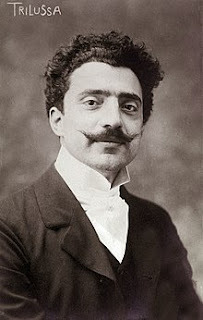Roberto Benigni - Oscar winner
How Life is Beautiful made Tuscan actor and director famous
Roberto Benigni, whose performance in the 1997 film Life is Beautiful won him an Oscar for Best Actor, was born on this day in 1952 in rural Tuscany, around 20km south of Arezzo. The Academy Award, for which he beat off strong competition from Nick Nolte (Affliction) and Tom Hanks (Saving Private Ryan) among others, put him in the company of Anna Magnani (1955) and Sophia Loren (1961) as one of just three Italian winners of best actor or actress. Benigni, who also directed Life is Beautiful, had won the Oscar for Best Foreign Language Film earlier in the awards ceremony, which delighted him so much he famously clambered on to the back of the seats of audience members in the row in front of his to lead the applause before stepping up to the stage to receive the award from Sophia Loren. When Helen Hunt called out his name for Best Actor - the first since Loren to win the most coveted prize with a foreign language film - he began his acceptance speech by apologizing for having "used up all my English", before proceeding to deliver another joyously emotional expression of gratitude. Read more…
_______________________________________
Niccolò Paganini - musician and composer
Extraordinary talent aroused bizarre suspicions
The musician and composer Niccolò Paganini, widely regarded as one of the greatest violinists of all time, was born on this day in 1782 in Genoa. Paganini’s ability was so far ahead of his contemporaries that to some observers it defied comprehension. He possessed unusually long fingers, a memory that enabled him to play entire pieces without the need for sheet music, and could play at up to 12 notes per second. This, combined with his appearance - he was tall and thin, with hollow cheeks, pale skin and a fondness for dressing in black - as well as a habit of making wild, exaggerated movements as he played, gave rise to outlandish theories that he was possessed by the Devil, or even was the Devil himself. He also pursued a somewhat dissolute lifestyle, drinking heavily, gambling and taking advantage of his fame to engage in numerous affairs. The suspicion of demonic associations stayed with him all his life to the extent that after his death at the age of 58 it was four years before his body was laid to rest because the Catholic Church would not give him a Christian burial, their reticence not helped by his refusal to accept the last rites. Read more...
_______________________________________
Enrico Mattei – industrialist and entrepreneur
Death in plane crash remains an unsolved mystery
Enrico Mattei, one of the most important figures in Italy’s post-War economic rebirth, was killed on this day in 1962 in a plane crash near the village of Bascapè in Lombardy. Accompanied by a Time-Life journalist, William McHale, Mattei was returning to Milan from Catania in Sicily in a French-built four-seater Morane-Saulnier jet being flown by Irnerio Bertuzzi, a respected pilot who had flown many daring missions during the Second World War. They were on their descent towards Milan Linate when the crash happened, less than 17km (10.5 miles) from the airport. Mattei, a politically powerful industrialist, best known for turning round Italy’s seemingly unviable oil industry, was not short of enemies and after his death there was considerable speculation that it did not happen by accident. A government-led investigation, overseen by the then Italian Defence Minister Giulio Andreotti, concluded that a storm was to blame for the crash, even though the pilot was highly experienced and very unlikely to have allowed bad weather to bring him down. Questions about the initial inquiry’s findings led to a second inquiry being opened in 1966 but shelved without reaching a conclusion. Read more…
_______________________________________
Simone Moro - mountaineer
Bergamo climber with unique record
The mountaineer Simone Moro, who is the only climber whose list of achievements includes the first winter ascent of four of the so-called eight-thousanders, was born on this day in 1967 in the city of Bergamo in Lombardy. The eight-thousanders are the 14 peaks on Earth that rise to more than 8,000m (26,247ft) above sea level. All are located in the Himalayan and Karakoram mountain ranges in Asia. A veteran of 15 winter expeditions, he completed the winter ascent of Shisha Pangma (8,027m) in 2005, Makalu (8,485m) in 2009, Gasherbrum II (8,035m) in 2011 and Nanga Parbat (8,126m) in 2016. He has scaled Everest (8,848m) four times, including the first solo south-north traverse in 2006. In total he has completed more than 50 expeditions, conquering peaks in Tien Shan, Pamir, Andes, Patagonia and Antarctica as well as the Himalayas and Karakoram. Moro is also renowned for his courage and bravery. During his 2001 attempt on the Everest-Lhotse traverse, he abandoned his ascent at 8,000m and battled through the most dangerous conditions in darkness to save the life of British climber Tom Moores. Read more…
.jpg)
.jpg)
.jpg)

.jpg)
.jpg)


.jpg)






.jpg)
